We figure out how to grow figs in the garden
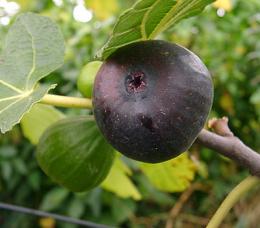
The fig plant is known to many for its sweet and tasty fruits. But few people know that figs and indoor ficus are relatives, and we will try to figure out how to grow figs in the garden in the article.
Content:
Description of the species
Figs are a member of the Ficus genus. Due to its fruits it has several names:
- Smokva
- Fig
- Fig tree
- Fig
- Fig tree
In the wild it grows in a subtropical climate:
- Africa
- Asia
- Caucasus
- Mediterranean
And found in Crimea, Krasnodar region and the Carpathians.
Figs are vigorous, deciduous shrubs or trees. The leaves are large, divided, hard. Flowers of two types:
- figs, female flowers
- caprifiga, male flowers
They develop in the axils of the leaves of various trees. After fertilization, fruits are formed in place of the female flowers. The shape of the fig fruit is pear-shaped, the flesh is very sweet, and at the top there is an eye covered with scales. The colors are very varied:
- black - blue
- yellow
- yellow - green
Fresh fig fruits contain up to 12 grams of sugars, and dried ones - up to 70. Therefore, they are a high-calorie food product.
In cold climate regions of Russia, figs have been grown as a houseplant since the late 18th century. When grown indoors, the plant also sheds its leaves and may even set fruit. But it turns out that you can grow a heat-loving plant in open ground conditions. It is only important to choose the right place.
Where to plant figs?

In warm climates, figs produce up to three harvests per year. But also in those regions where in winter negative temperatures reach minus 25 degrees, it can withstand the winter period and even produce a harvest of sweet figs. The main condition is the right location. The main requirement is maximum sunlight. The plant should be exposed to sunlight for up to 10 - 12 hours a day.
There should be no natural or artificial barriers on the southern side of the plant, such as tall plantings, buildings or structures. But from the north, west and east, such obstacles must be present, additionally protecting the figs from cold air. Such protection, from trees and buildings, creates a certain microclimate and increases the temperature by two or even three degrees. What improves the conditions for growing figs in the garden. At the next stage, you need to choose the right variety and prepare a place for planting.
Selecting a variety and planting figs in open ground
When choosing a fig tree variety for planting in the garden, you should remember that pollination of female inflorescences is required to obtain a harvest. In the natural conditions of a warm subtropical climate, a heat-loving genus of wasps copes with this task. It is almost impossible to replace it with more cold-resistant insects - pollinators. This is due to the structure of fig flowers. Therefore, for planting in Russian regions with a cooler climate, the following self-fertile varieties are suitable:
- Turkish is brown, with reddish-brown fruits that begin to ripen in the last ten days of August.
- Date Neapolitan, with violet-red figs ripening in September.
- Sabrucia is pink, partially self-fertile, early.
- Crimean black, has an extended fruiting period, the fruits are suitable for various processing and preservation.
For planting a seedling you need a properly organized landing trench. The width of the trench should be up to one meter, but not less than 70 cm. The trench is dug so that it forms a small slope from the south, the optimal depth is 120 - 150 cm. When digging a ditch, do not mix the top fertile layer with the lower layers of soil.
Mix the removed top soil with:
- leaf soil
- rotted manure
- compost
On top of the drainage at the bottom of the ditch, pour mounds of the resulting soil mixture. In this case, the depth of the landing trench is reduced by approximately 1/3. The seedling must be placed on a mound and all the roots straightened out. When filling the trench, the root collar can be slightly deeper into the ground.
The tree trunk circle, especially from the south, is necessary cover with film, boards, to prevent the growth of weeds under a young fig tree. The trench method of planting figs will cover it for the winter and create conditions for a successful wintering.
How to cover figs in the garden for the winter?

After the figs have shed all their leaves in the fall, but before the onset of stable frosts, combine the nearby branches of the plant into bunches of two or three pieces and pin them to the high side of the trench with special wire hooks.
They need to be covered from above:
- straw
- spruce branches
- corn tops
On top of everything you need to put additionally:
- cardboard
- roofing felt
- boards
IN covering material It is worth providing a hole for ventilation and fresh air, but if frosts drop below 15 - 20 degrees, then the hole should be closed.
In spring, there is no need to rush to open the plant.In the southern regions, covering material can be removed in mid-April, in the northern regions - 15 days later.
Figs are an ornamental plant with tasty fruits and leaves used in folk and official medicine. Therefore, it is worth trying and growing it in the garden yourself.
Video about the intricacies of working with fig seedlings:
Interesting information about the vegetable garden

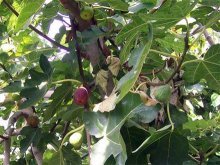
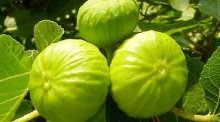
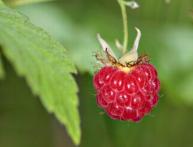

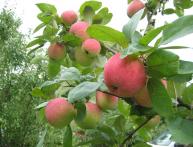
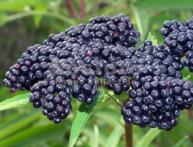
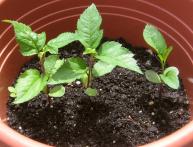
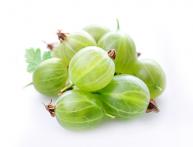
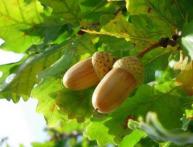
Comments
Not a very picky shrub, but requiring care. Relatively frost-resistant, but it needs to be covered, it’s better to be safe. You can plant small indoor figs at home.